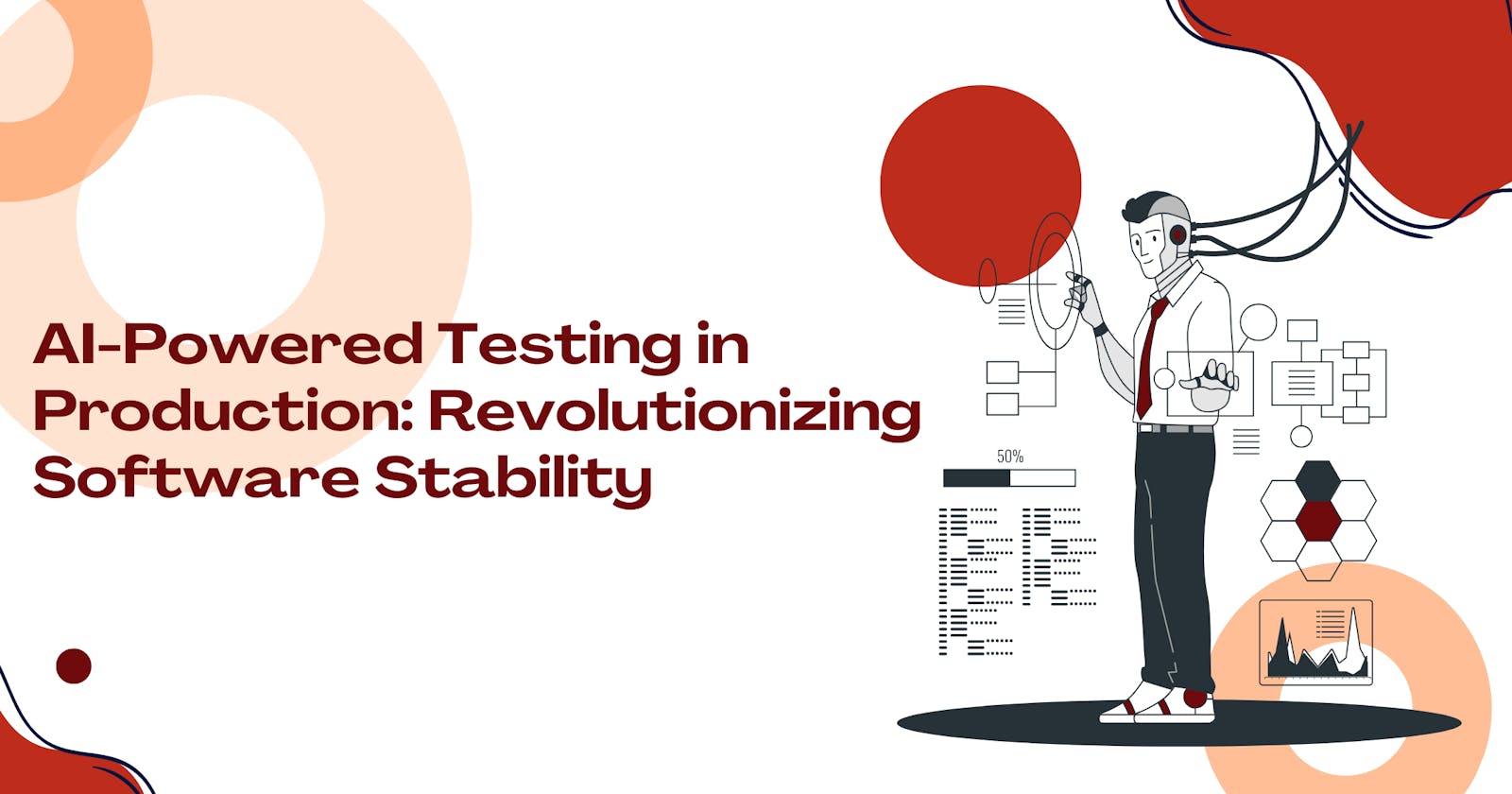In the ever-evolving domain of software development, a paradigm shift caused by Artificial Intelligence and Machine Learning (AI/ML) is changing traditional software methods. And now, staying ahead of the curve is not just a choice but a necessity. The traditional testing approaches in production are now propelled by integrating Artificial Intelligence into the core of software methodologies. The user feedback now isn't just data but an actionable intelligence steering the enhancement of software applications.
In this blog, we discuss several aspects of testing in production with AI-powered tools, intricate pathways of predictive analysis, automated test case generation, sentiment analysis, and self-healing systems.
Understanding AI in Testing:
Machine Learning for Predictive Analysis
Machine learning algorithms have revolutionized the way we approach software testing by enabling predictive analysis, a proactive method to identify potential issues before they escalate in the live environment. Here’s how machine learning achieves this:
a. Predicting Potential Issues - Machine learning algorithms analyze historical data and patterns to identify potential issues in the codebase. By recognizing correlations between certain code changes and past problems, these algorithms can predict the likelihood of similar issues occurring in the future.
b. Anomaly Detection - Anomaly detection, a crucial aspect of predictive analysis, involves identifying patterns that deviate from the norm. Machine learning algorithms excel at detecting anomalies within vast datasets, enabling teams to pinpoint irregularities and potential issues in real time.
Example: Consider an e-commerce platform. Machine learning algorithms can analyze user behavior data. If a sudden spike in traffic or a surge in specific user actions is detected, the system can predict potential strain on servers, enabling proactive measures to prevent crashes or slowdowns.
Natural Language Processing (NLP) for Log Analysis
Natural Language Processing (NLP) is a branch of AI that empowers machines to understand, interpret, and generate human language. In the context of log analysis, NLP plays a crucial role in understanding the context and semantics of logs and error messages. Here's how NLP is leveraged for real-time log analysis:
a. Real-time Log Analysis - NLP algorithms process log files and error messages in real time. By extracting relevant information, such as error types, affected components, and user interactions, NLP algorithms transform raw log data into actionable insights.
b. Benefits of Understanding and Resolving Issues through NLP - NLP algorithms quickly parse through logs, enabling rapid issue identification and resolution. This speed is crucial in high-traffic applications where downtime can lead to significant losses. They not only identify surface-level issues but also help in uncovering underlying causes. By understanding the context in which errors occur, developers can address root causes more effectively.
Example: Imagine a web service experiencing intermittent outages. By employing NLP algorithms, logs detailing user interactions, server responses, and error messages are analyzed. NLP identifies recurring patterns, helping the team recognize that specific user actions trigger the outages, and guiding them toward a targeted solution.
AI-Driven Test Automation:

Automated Test Case Generation
AI algorithms have revolutionized test case generation by enabling the creation of diverse and dynamic test scenarios. Traditional test case generation methods often struggle to cover all possible inputs and edge cases. AI, particularly machine learning algorithms, can analyze vast amounts of data and identify patterns that humans might miss. Here's how AI generates diverse test cases based on dynamic inputs:
a. Data Analysis and Pattern Recognition: AI algorithms analyze historical data and user interactions to identify patterns and trends. By understanding how users interact with the application, AI can generate test cases that cover various usage scenarios.
b. Dynamic Input Generation: AI tools create test inputs dynamically, considering a wide range of possibilities. These inputs include various data types, user inputs, and environmental factors, ensuring comprehensive test coverage.
Efficiency and Coverage Benefits of Automatically Generated Test Cases:
a. Increase Test Coverage: AI-generated test cases cover a broader spectrum of scenarios, including edge cases and unexpected inputs. This extensive coverage helps identify potential issues that might be missed in manual or traditional testing methods.
b. Efficient Resource Utilization: Automated test case generation saves time and effort compared to manual test case design. Testers can focus on more complex and creative aspects of testing, while AI handles the generation of repetitive and exhaustive test cases.
c. Quick Adaptation to Code Changes: When the application code changes, AI algorithms quickly adapt the generated test cases to suit the new code structure.
This adaptability ensures that the tests remain relevant and effective even in agile development environments.
Self-Healing Systems
AI-powered systems introduce the concept of self-healing, where applications can identify failures and automatically apply corrective actions without human intervention. This proactive approach ensures the resilience of applications, making them capable of adapting to changing conditions and maintaining optimal performance.
How AI-Powered Systems Identify Failures and Apply Corrective Actions:
a. Real-Time Monitoring and Anomaly Detection: AI systems continuously monitor various metrics, such as response times, error rates, and resource utilization. Anomalies, deviations from normal behavior, are detected in real time through machine learning algorithms.
b. Automated Remediation: When anomalies or failures are detected, AI-powered systems analyze the root cause and apply predefined corrective actions. These actions can include scaling resources, reverting to a stable configuration, or even triggering automated rollback procedures.
Challenges and Ethical Considerations:
Data Privacy Concerns: When AI algorithms are utilized for testing, there's a substantial need to handle sensitive user data responsibly. Ensuring compliance with data protection regulations such as GDPR and HIPAA is crucial. AI tools often require substantial amounts of data to function effectively, making it essential to anonymize and secure this data during testing. Privacy-preserving techniques, like differential privacy, can be employed to protect individual user identities and sensitive information while still allowing for meaningful analysis.
Algorithmic Biases: AI algorithms can inherit biases present in the data they are trained on, leading to biased outcomes. In testing, this can manifest as skewed results, impacting the accuracy of the testing process. To mitigate this, it's important to regularly audit AI systems for biases. Employing diverse, representative datasets can also help in reducing biases. Additionally, employing fairness-aware algorithms and techniques can help identify and mitigate biases in real time.
Strategies to Ensure Fairness:
Diverse and Representative Data: Ensuring that the training data used for AI testing tools is diverse and representative of the user base helps in reducing biases.
Regular Auditing and Bias Detection: Implement regular audits of AI systems to identify and rectify biases. Use specialized tools that can help in detecting and visualizing biases in the data and algorithms.
Explainable AI (XAI): Employ XAI techniques to make AI algorithms more transparent and understandable, enabling developers and testers to comprehend the decision-making process better.
Conclusion:
In conclusion, the combination of AI and software testing represents a transformative force in the industry. It's not just about writing lines of code; it's about crafting intelligent, adaptive, and ethical solutions. It's the responsibility of developers and testers to harness the power of AI and create software that not only meets the needs of today but anticipates the challenges of tomorrow. By exploring AI-powered testing tools and methodologies, we pave the way for a time when software development is not just efficient but truly innovative and impactful.

